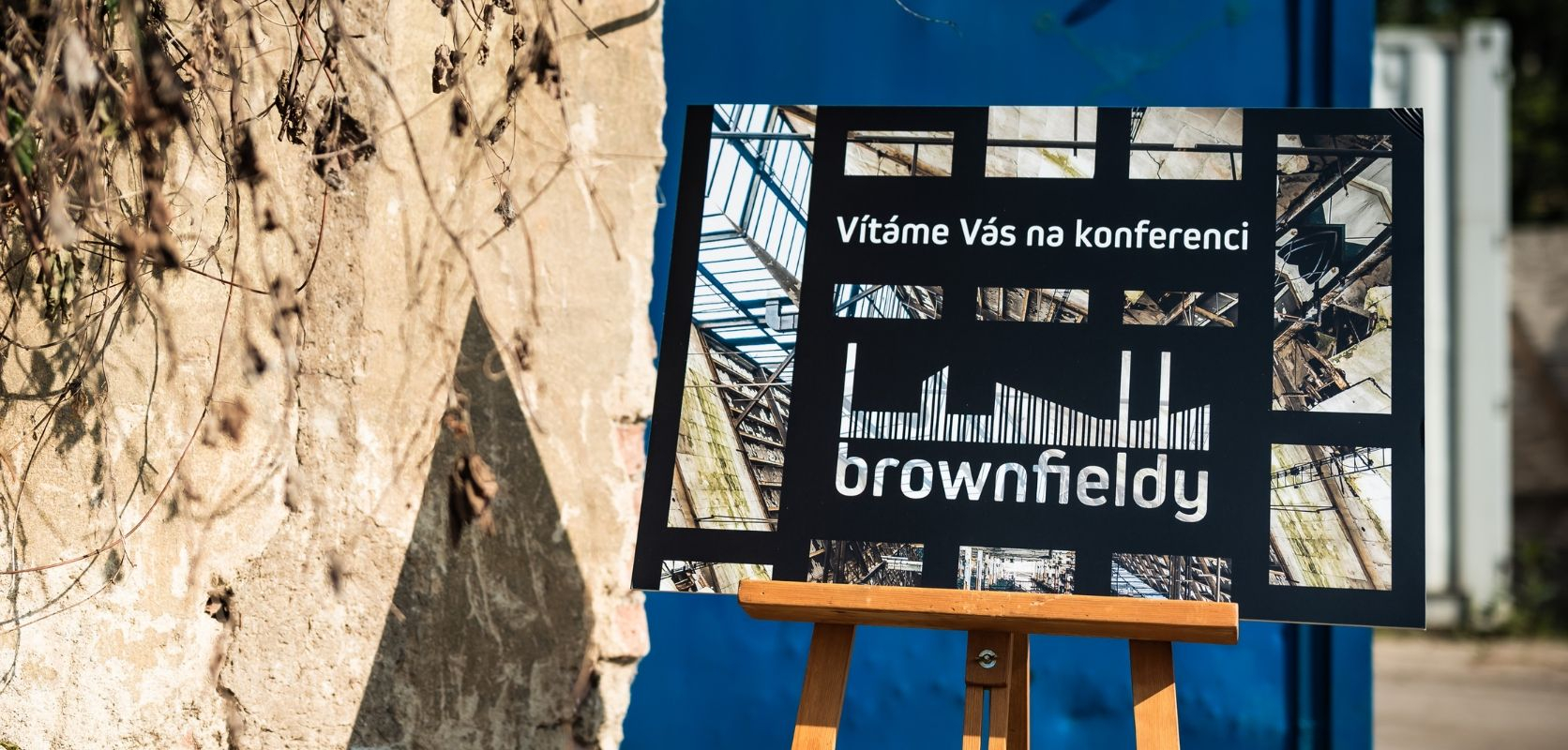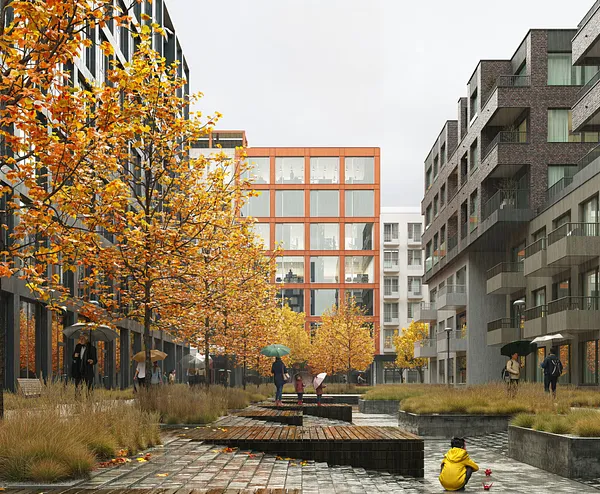What would it be like if Kovy became a developer?
The first keynote of the conference was delivered by Karel “Kovy” Kovář, an influencer and YouTuber, who reflected on what he would build if given the opportunity to develop an urban brownfield. He drew advance information from his followers and presented how diverse the younger generation's idea of an ideal home of their own is. What kind of neighbourhood they would like to live in and how far away the idea is from reality. And if you're wondering what Kovy himself would choose for his housing, we interviewed him on this topic in our podcast last year.
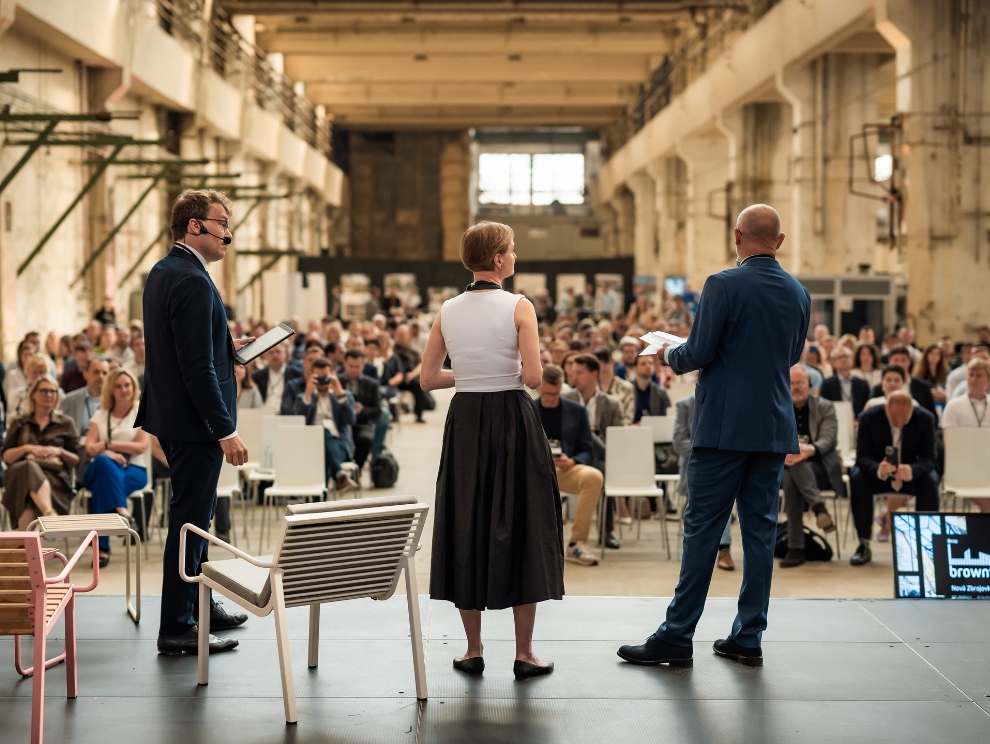 | 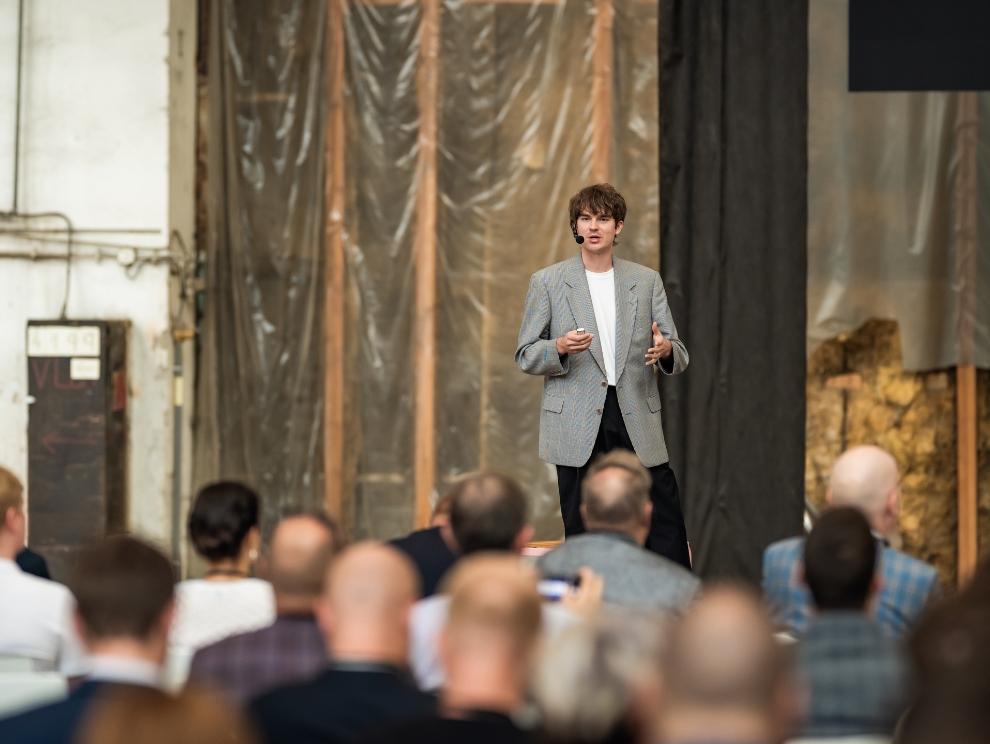 |
| Opening of the Brownfields 2025 conference in our Hala 76 | YouTuber Kovy offered a view on the topic of brownfields through the eyes of the young generation |
The largest infrastructure project in Vienna's history
The foreign inspiration came from Vienna, where it has been shown for years that planning brownfield development on a large scale is possible. Andreas Trisko from Vienna's city planning team presented a transformation project to relocate the main railway station, creating 5,000 apartments and offices for 20,000 people. The new Nordwestbahnhof project is set to be similarly ambitious. In the panel discussion that followed, he was joined by representatives from Bratislava and Brno, who discussed the challenges of long-term planning, public-private cooperation and the cities' different approaches.
The afternoon sessions offered a deeper dive into specific solutions
The topic of one of the programs was “Alternative Treatment of the Housing Crisis”, which discussed the possibilities of cooperative housing, represented by the HBLOK project in Hanušovice, housing for the elderly in Kateřinice, and employee apartments outside of the classic development implemented by Pivovar Bernard.
The “Brownfields for Business” series focused on inspiring examples of how abandoned industrial and economic spaces can be transformed into vibrant, creative and economically significant business spaces.
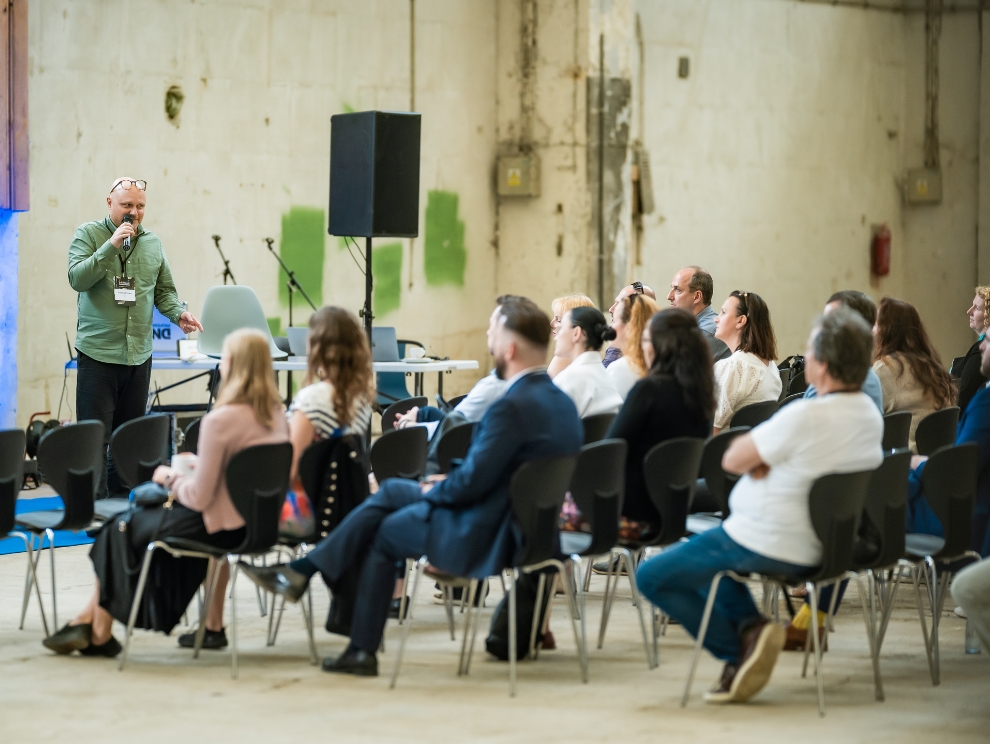 | 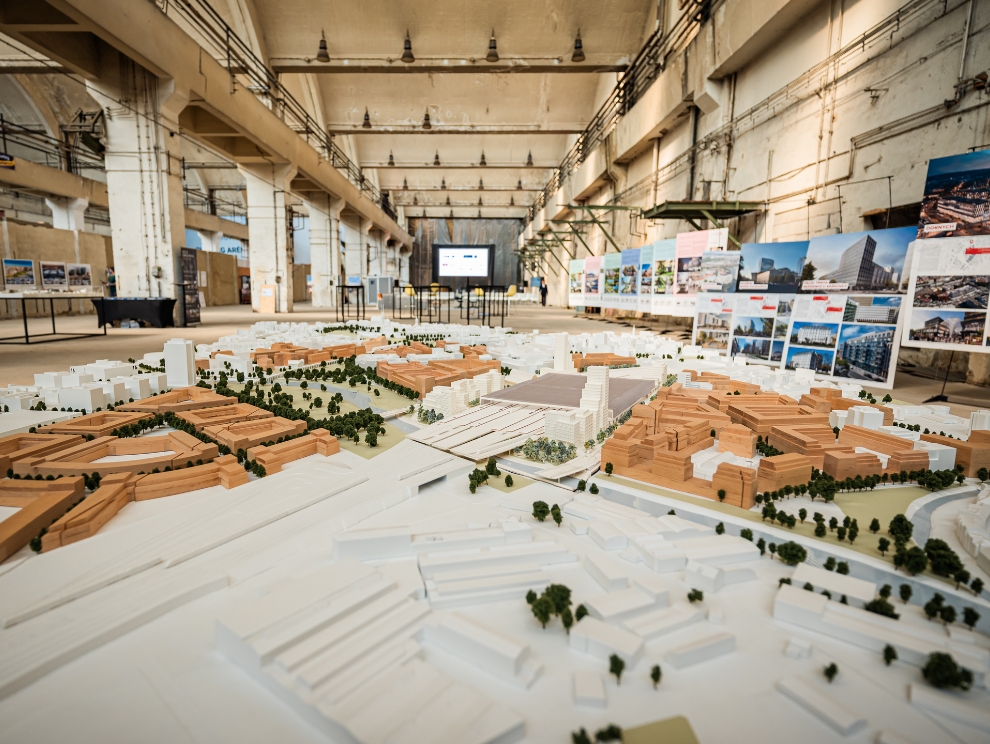 |
The use of brownfields for business purposes was one of the afternoon's topics | 3D models and information panels brought visitors closer to the presented projects |
One of them is the project of Richard Vodička from Egoé - the transformation of the former JZD into a production and educational area of Pole Design, where farmers were replaced by designers, engineers and production workers.
The Vír Factory, run by David Matuška, is gradually being transformed into a multifunctional venue offering accommodation, catering and facilities for conferences, meetings and events, to which a farm and cultural centre is to be gradually added, emerging from the original Uhelna.
Brownfields are not an obstacle, they are an opportunity and a challenge in one
The centre of the afternoon session was the topic “Development of brownfields in spite of the system”, where the main brownfield projects in Brno, led by Nová Zbrojovka, were presented.
Our project manager Honza Růžička highlighted one of the special features of the development of Nová Zbrojovka: "Nová Zbrojovka is a confident project, after years of preparation the area is now taking shape at a rapid pace. From the very beginning it has been doing one thing a little differently than usual. It is transparent, it builds community and interest, it communicates all the parameters of development in advance and shares them not only with the city but also with the general public. He is interested in the opinions of neighbors, local residents and is inspired by their opinions. What Nová Zbrojovka is today, I am personally really happy about that." We join in the joy of Nová Zbrojovka's development!
 |  |
| Project Manager Honza Růžička presents the development of Nová Zbrojovka | Debate of private and public sector representatives on procedural barriers to brownfield development |
The subsequent discussion on the topic of legislative and procedural barriers to the development of brownfields then revealed what would really help us in the revitalisation of brownfields. In particular, faster permitting processes and the ability to better anticipate upcoming standards and technical requirements would be desirable. And also, in general, more harmonious cooperation between the public and private sectors, knowing that we are pulling together and that any investment in brownfields is significantly more beneficial to the city than building on greenfields.
It was nice to meet so many people who believe, as we do, that brownfield revitalization instead of greenfield or brownfield development is worth it despite all the barriers. We also learned what motivates Honza Růžička "What I like most about the project is its scope - it's not just about profit for the developer, but about real benefits for the city and its residents. Nová will complement the amenities in this part of Brno, offer new opportunities for leisure and entertainment, and create a place that will serve both locals and visitors. In the future, the whole neighbourhood will benefit from it."
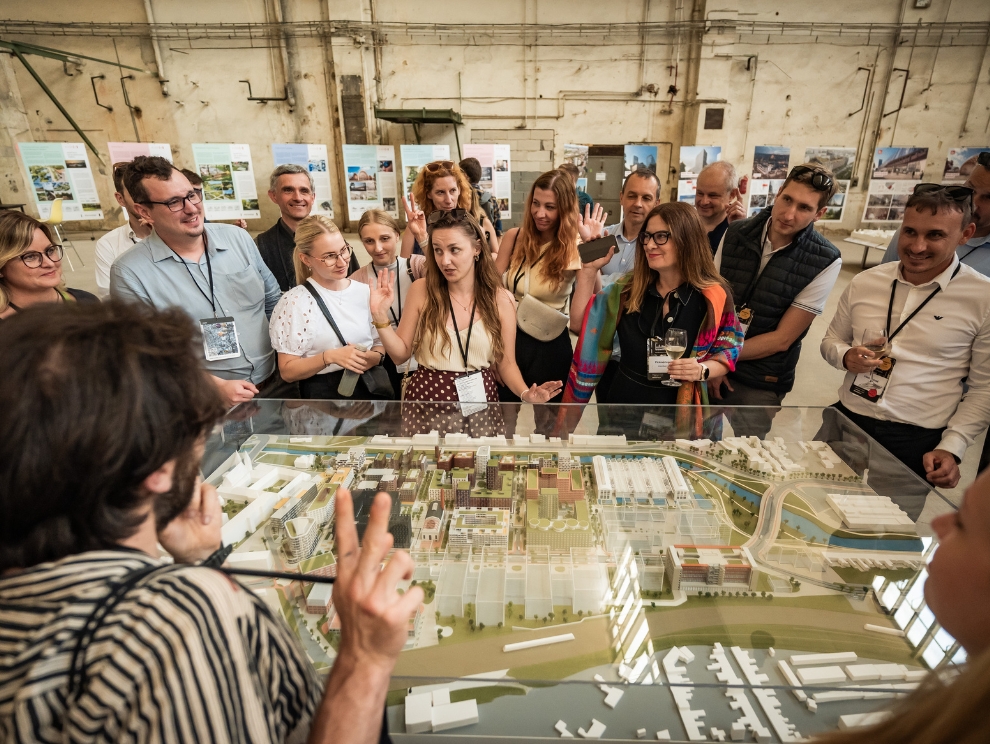 | 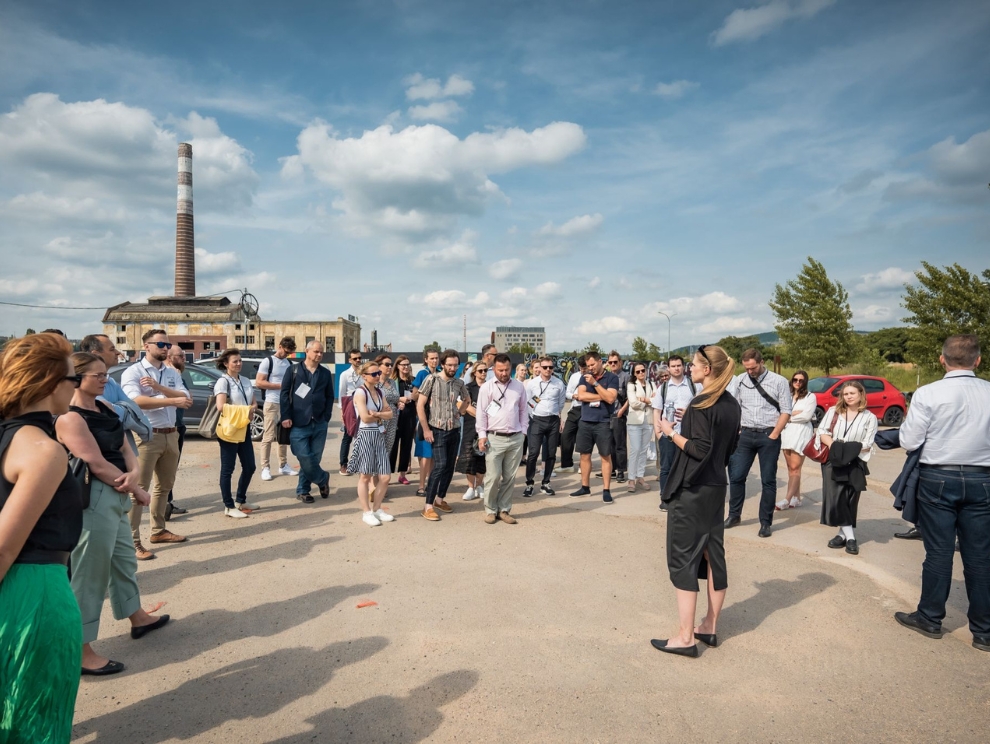 |
| Nela Kadaníková, project manager of Nová Zbrojovka, presented a 3D model of the future district | At the end, visitors could experience a tour of Nová Zbrojovka under the guidance of our architect Ivona Uherková |
Brownfields are the future
An afternoon keynote by American urban planner Mark Johnson reminded us why brownfields really are the future. Using the examples of the revitalisation of the Rivers District in Calgary, the former Stapleton Airport in Denver and the Alloy Block in Brooklyn, he explained that design and a clear planning process play a key role.
We are honored that an event of this format could take place this year in our premises, which are synonymous with what the conference was all about - the transformation and restoration of life to a dilapidated area, but also in its ongoing use for beneficial activities.
